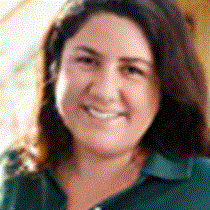Isabela and Fernandina islands
The sun is beginning to rise. The western islands start to be visible. Their beauty is more and more obvious as the morning light hits their volcanic slopes. There is Isabela, with its six volcanoes, and on the other side, farther west, Fernandina, the youngest.
Seas are calm and the sky is blue. We are looking for marine mammals in our way to the Equator line. The captain, Pablo Garces, takes us very close to Ecuador volcano, and we enjoy its collapsed caldera. We actually get into its heart and see its young lava flows and parasitic cones.
Punta Vicente Roca is crowded with marine iguanas, one of the largest subspecies in Galápagos. We have a ride that gets us even closer to the lava flows and ash layers, and we see blue-footed boobies and our first flightless cormorants. It’s wonderful to jump in this water after the ride and see its magic world below sea level. There are marine invertebrates on the walls as well as Creole fish, and the highlight, green sea turtles swimming all over.
In the afternoon, we land on Fernandina, the youngest. We explore the tidal pools where sally-light foot crabs and shore birds find their food. Iguanas sun bath on the rocks, and sea lions get their rest. They need it after hours at sea.
We look south, towards Isabela. We know the eruption is over, however, no one knows when it will explode again, and we just hope that maybe, during sunset time…
The sun is beginning to rise. The western islands start to be visible. Their beauty is more and more obvious as the morning light hits their volcanic slopes. There is Isabela, with its six volcanoes, and on the other side, farther west, Fernandina, the youngest.
Seas are calm and the sky is blue. We are looking for marine mammals in our way to the Equator line. The captain, Pablo Garces, takes us very close to Ecuador volcano, and we enjoy its collapsed caldera. We actually get into its heart and see its young lava flows and parasitic cones.
Punta Vicente Roca is crowded with marine iguanas, one of the largest subspecies in Galápagos. We have a ride that gets us even closer to the lava flows and ash layers, and we see blue-footed boobies and our first flightless cormorants. It’s wonderful to jump in this water after the ride and see its magic world below sea level. There are marine invertebrates on the walls as well as Creole fish, and the highlight, green sea turtles swimming all over.
In the afternoon, we land on Fernandina, the youngest. We explore the tidal pools where sally-light foot crabs and shore birds find their food. Iguanas sun bath on the rocks, and sea lions get their rest. They need it after hours at sea.
We look south, towards Isabela. We know the eruption is over, however, no one knows when it will explode again, and we just hope that maybe, during sunset time…




